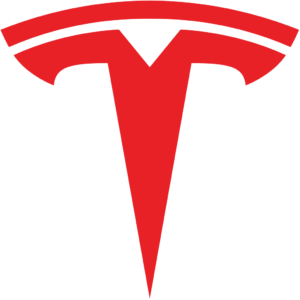Option 4: Buy or lease one or more EVs and establish a Robotaxi TaaS fleet business:
In this section, we drop all guise of a part-time side-line venture. Instead we form a Transportation as a Service (TaaS) business operating one or more autonomous electric vehicles for profit. As a result, we will set things up formally – an accounting function, regular tax filings, a business license filing, local permits and stickers, regular inspections, and whatever else that must be done to do things by the book.
There are numerous details to work out – keeping the electric vehicles clean, where and how often to charge them (if needed) between “jobs”, where to park them, and the like. Robotaxi platform software similar to what Uber and Lyft use, will be available to anyone for booking reservations, handling payments, allowing customer feedback, and to cover all kinds of varying traffic conditions such as construction or accident delays, customer vandalism, customers late, customer no-shows, extra unplanned stops, baby diaper changes in the vehicle, people getting sick or urinating in the car, etc. All rides start with a valid credit card with room to charge beyond the initial estimated cost of the ride!
One of the appealing aspects of future Robotaxi fleets to consumers will be the choice of autonomous vehicles available if they desire a vehicle for a particular private occasion. Taking the spouse out to an anniversary dinner at a fancy restaurant – how about a Tesla Model S? Taking the family out to a ballgame – how about a Tesla Model X or Cybertruck? Need a 12 passenger vehicle for a wine tasting trip – how about an electric Mercedes executive-outfitted Sprinter? Just one person with a medical appointment downtown – how about a one-person “pod” EV?
Of course there will be an extra charge for this private use vehicle selection. Otherwise, for a standard fee you can just ride in whatever Robotaxi is available, with or without other people. Chances are the one that picks you up won’t be the one that brings you home.
Robotaxi cost and profit information:
Note: For the cost information in this series of articles we have used a mix of information from Tesloop, Tony Seba and James Arbib’s Rethinking Transportation 2020-2030, publicly available government websites such as BTS.gov, and a multitude of YouTube EV channels dedicated to transportation and electric vehicles. Tesloop has driven Tesla Model Ss and Xs over 2.5 million miles as ridesharing vehicles on intercity routes in California and Nevada, with some vehicles accumulating 200,000 miles a year or 17,000 miles a month. It’s hard to beat that kind of experience when evaluating cost numbers. See Tesloop’s many valuable videos using YouTube’s search function.
As noted earlier the average ICE-powered vehicle owner pays an all-inclusive price of about $0.55 to $1.00 a mile to own and drive their car. As an example, a three-year 45,000 mile lease on a 2017 Lincoln MKX costs a family member 72 cents a mile; 74 cents a mile if a new set of tires has to be installed before the vehicle is turned in.
As the operator of a Robotaxi fleet of autonomous vehicles, your first choice must be the type of vehicle – conventional sedan, SUV, CUV, pickup trick, passenger van, delivery van, luxury vehicle, small bus, etc.. This takes a careful evaluation of your market and the type of customer you wish to serve.
We will construct one basic cost model, then plug in various prices for the cost of the electric Robotaxi we select. Since Robotaxis without driver controls don’t exist yet, we will make some price assumptions as follows: a “pod” single person vehicle — $20,000; a four door sedan or small SUV similar to a Tesla Model 3 or Y, $40,000; a pickup truck such as Tesla’s forthcoming Cybertruck $55,000; and a luxury four-door sedan or SUV such as Tesla’s Model S or X, $70,000. In each case these would be four-wheel drive vehicles to maximize safety. These costs may seem high for a pure Robotaxi but remember each vehicle comes with Tesla’s Full Self Driving capability (or some other manufacturer’s “equivalent”). There are some people that are predicting that with FSD, future Teslas will cost much more than today’s $7,000, at least initially. Perhaps $20,000 to $30,000 more!
Remember, a key assumption of the Robotaxi business case is that each vehicle will be depreciated (and perhaps driven) 100,000 miles per year. Generally, the Robotaxi model also start by assuming a 50% utilization rate. In our assumptions, we will assume a vehicle life of 500,000 miles, despite today’s promise of million mile Robotaxis. So at that utilization rate, your Robotaxi may drive 100,000 miles, but only 50,000 of them will be “revenue” or “chargeable” miles carrying one or more passengers.
Anticipated Robotaxi Revenue:
On the revenue side of the ledger, we can only look to today’s “Robotaxi” fleets such as Uber and Lyft as price umbrellas for our future Robotaxi business. Current Uber/Lyft prices seem to run in the range of $1.50 to $3.00 per mile, depending on the vehicle, and even up to $5.80 a mile for Lyft’s “Lux Black XL Spacious Luxury Ride”. Other charges can apply, or as they say, “your mileage may vary”. Obviously Robotaxi prices will start as high as possible under this price umbrella and drive the continuing drop in such ride-sharing prices. As pointed out earlier, Uber and Lyft cannot currently compete with pure Robotaxis as they have to pay a driver – something that constitutes about one-third of their revenue, or adds 50% to their costs.
Reportedly, current Uber and Lyft “take” rates are 35% and 38% respectively. From drivers’ records kept while working with each company, they report take rates of 29.6% for Uber and 34.5% for Lyft, close to the rates quoted in the previous sentence.
Elon Musk notes that Robotaxi prices could start at $1.00 a mile, significantly undercutting Uber and Lyft’s prices. Why leap immediately to that much price difference – in view of less competition at the outset of the Robotaxi marketplace? Maybe it would be more savvy and definitely more profitable to start at $1.25 to $1.50 a mile.
Moving to the cost per mile side of the ledger, as a business we will first record the depreciation charge – straight line – by dividing each vehicle’s purchase price by the vehicle’s life in years at 100,000 miles per year. $55,000 divided by 5 years equals $11,000 a year in depreciation, for example. Because the vehicle in our model will be fully depreciated at the end of five years and 500,000 miles, it will have no salvage value (on our financial records). Note that it is likely to have salvage value well above zero dollars in the real world!
Insurance cost is really an unknown at this time as typical auto insurance companies have no experience with Robotaxis. The company with the most experience is Tesla, with its logging of Autopilot safety data and the fact that it is now in the automobile insurance business in California. For this cost model I am assuming Tesloop’s number of $.054 per mile for a commercial vehicle insurance policy. This is higher than the cost for pure Robotaxis is likely to be as this value is for today’s Tesla Model Ss and Xs, not tomorrow’s stripped down Robotaxi versions of the S and X. In addition, Tesloop used human drivers, even the best of whom are less safe statistically than either Tesla’s Autopilot is now, or its Full Self Driving will be in the future.
Eventually as today’s insurance companies gain experience with autonomous Robotaxis, and the mix of vehicles on the road become more autonomous vehicles, the amount of accidents will sharply diminish, thus further lowering insurance costs. If the current companies don’t lower their prices sufficiently, new insurance competitors will enter the market and do so.
Maintenance and repair are considerably higher on an ICE-powered vehicle than with an electric vehicle. Brakes on an EV last some 150,000 to 200,000 miles. The routine maintenance items on an electric vehicle such as a Tesla are usually four – windshield washer fluid, wiper blades, cabin air filters, and tires – the latter at $1,000 for four every 50,000 miles. Tesloop’s experience over a couple of million miles of driving Teslas is that maintenance and repair ran about $0.06 a mile. So we will use that number.
For a “fuel” or electricity charging cost, we will again use Tesloop’s number of $0.06 a mile. As a check on that, assume Tesla’s current Supercharger price of $0.28 a kWh, and further assume that range per kilowatt hour will increase to at least 5 miles per kWh in the near future, thus giving us an energy cost of $0.056 cents a mile. Note that through other charging arrangements, it may be possible to lower this cost, perhaps by some 40%. Note also that if you buy a Tesla Model S or X for a Robotaxi, they come with free Supercharging, so you could save as much as $0.06 a mile driving routes where Superchargers were plentiful.
Image courtesy of Pixabay
Your feedback in the form of comments or suggestions are welcome in the comment window. Thank you for following my blogs on this site and for participating in my blogging community.




